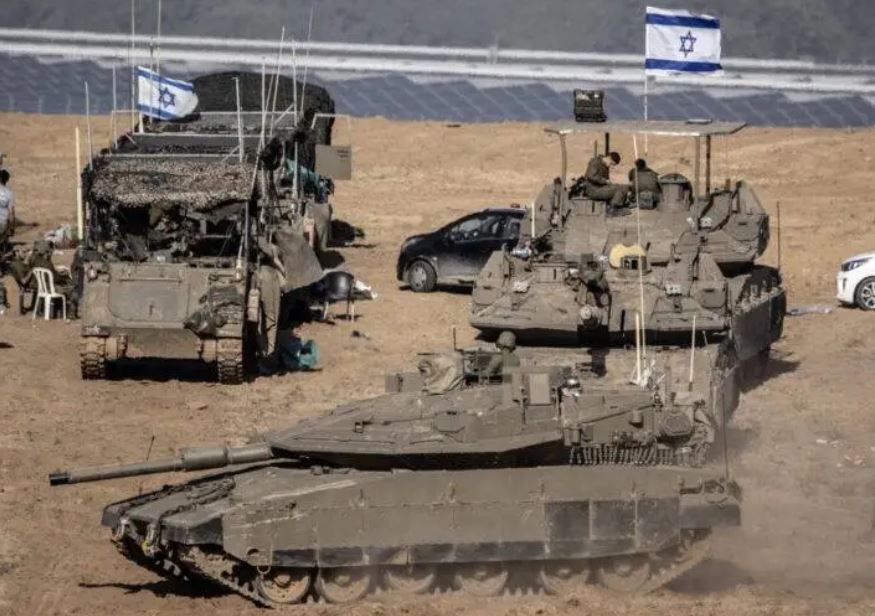In a series of harrowing events, Israeli airstrikes have claimed the lives of six individuals in central Gaza, including children and a United Nations worker. These incidents occur as negotiations for a ceasefire between Israel and Hamas show signs of progress, raising hopes amidst the escalating conflict.
Focus Keyword: Israeli Airstrikes in Gaza
Tragic Casualties Amid Airstrikes
Israeli airstrikes on Gaza have resulted in the deaths of six people, including two children and a UN worker. According to Palestinian hospital officials and first responders, these attacks have further exacerbated the already dire situation in the region. The fatalities underscore the severe human toll of the ongoing conflict.
STATUS: The Israeli military has not commented on these specific strikes. Israel attributes civilian casualties to Hamas, alleging that militants use civilian areas for operations, a claim Hamas vehemently denies.
Increasing Displacement
Nearly 2 million Palestinians, constituting four-fifths of Gaza’s population, have been driven into the territory’s center due to expanding Israeli military offensives and evacuation orders. Civilians are seeking refuge in makeshift tent camps and overcrowded urban areas, often being displaced multiple times. The humanitarian crisis is deepening as resources become increasingly scarce.
Focus Keyword: Israeli Airstrikes in Gaza
West Bank Violence Escalates
Simultaneously, violence has surged in the occupied West Bank. Israeli forces have killed seven individuals in a raid and airstrike. The Israeli military describes these operations as “counterterrorism activities,” targeting militants in the area. Palestinian health officials confirm the deaths but highlight the growing toll on civilians and non-combatants.
STATUS: The situation remains volatile, with ongoing clashes and frequent military operations contributing to the instability.
Hezbollah and Regional Tensions
The conflict’s reach extends beyond Gaza and the West Bank. On the Israel-Lebanon border, Hezbollah, a militant group, launched rockets, lightly wounding two Israeli soldiers. This incident heightens concerns about a potential regional war as low-level skirmishes threaten to escalate.
STATUS: The international community watches anxiously as these clashes risk drawing neighboring countries into the conflict.
Civilian and UN Casualties
A strike near the Maghazi refugee camp killed three adults, one of whom was a UN worker, and injured several others. Another strike in the Nuseirat refugee camp killed an adult and two children. These attacks highlight the vulnerability of civilians, including humanitarian workers, in conflict zones.
STATUS: The Israeli military has yet to provide details on these incidents. The United Nations has expressed grave concern over the safety of its personnel and the civilian population.
Focus Keyword: Israeli Airstrikes in Gaza
Ceasefire Negotiations
Despite the violence, there are glimmers of hope for a ceasefire. Israeli negotiators are set to resume talks with Hamas, aiming for a ceasefire and hostage exchange deal. The negotiations, mediated by American, Qatari, and Egyptian officials, show renewed momentum after weeks of stagnation.
STATUS: The Israeli Prime Minister’s office emphasizes that significant gaps remain, while Hamas acknowledges a positive response to their proposed amendments to a U.S. ceasefire plan.
Challenges in Negotiations
The primary challenge in the negotiations lies in transitioning from the initial ceasefire phase to subsequent stages. Both sides harbor deep mistrust, fearing that the other will resume hostilities or make unrealistic demands, jeopardizing the fragile truce.
STATUS: Ongoing diplomatic efforts continue, with the international community urging both parties to commit to a lasting peace.
Regional Diplomatic Efforts
Senior Hamas officials have engaged in discussions with regional allies, including Hezbollah, the Houthi rebels in Yemen, and the Islamic Resistance in Iraq. These meetings signal broader regional involvement and the complexities of achieving a comprehensive peace agreement.
STATUS: Diplomatic channels remain active, with hopes that regional players can contribute to de-escalation efforts.
U.S. Involvement
In Washington, U.S. Defense Secretary Lloyd Austin has communicated with his Israeli counterpart, Yoav Gallant, expressing support for diplomatic efforts to resolve the Gaza conflict. The U.S. plays a crucial role in mediating and facilitating dialogue between the conflicting parties.
STATUS: The U.S. continues to advocate for a peaceful resolution, balancing its strategic interests in the region.
Humanitarian Impact
The humanitarian situation in Gaza is dire. The ongoing conflict, coupled with Israeli restrictions, has severely hampered aid efforts. The breakdown of law and order has led to widespread hunger and fears of famine. The United Nations has warned of a “plausible risk of genocide” in Gaza, a charge Israel firmly denies.
STATUS: The international community is calling for increased humanitarian assistance and the protection of civilians.
Conclusion
The conflict in Gaza and the West Bank continues to exact a heavy toll on civilians, with recent airstrikes highlighting the urgent need for a ceasefire. As negotiations proceed, the world watches closely, hoping for a resolution that brings peace and stability to the region.
Summary Table
| Key Learning Points | Description |
|---|---|
| Civilian Casualties | Israeli airstrikes in Gaza have resulted in six deaths, including children and a UN worker. |
| Displacement Crisis | Nearly 2 million Palestinians displaced within Gaza due to military offensives. |
| West Bank Violence | Israeli forces killed seven people in a raid and airstrike in the West Bank. |
| Regional Tensions | Hezbollah rockets from Lebanon injured two Israeli soldiers, raising regional conflict fears. |
| Ceasefire Talks | Renewed negotiations between Israel and Hamas show signs of progress towards a ceasefire. |
| Humanitarian Impact | Severe humanitarian crisis in Gaza with widespread hunger and risk of famine. |

Sunil Garnayak is an expert in Indian news with extensive knowledge of the nation’s political, social, and economic landscape and international relations. With years of experience in journalism, Sunil delivers in-depth analysis and accurate reporting that keeps readers informed about the latest developments in India. His commitment to factual accuracy and nuanced storytelling ensures that his articles provide valuable insights into the country’s most pressing issues.



